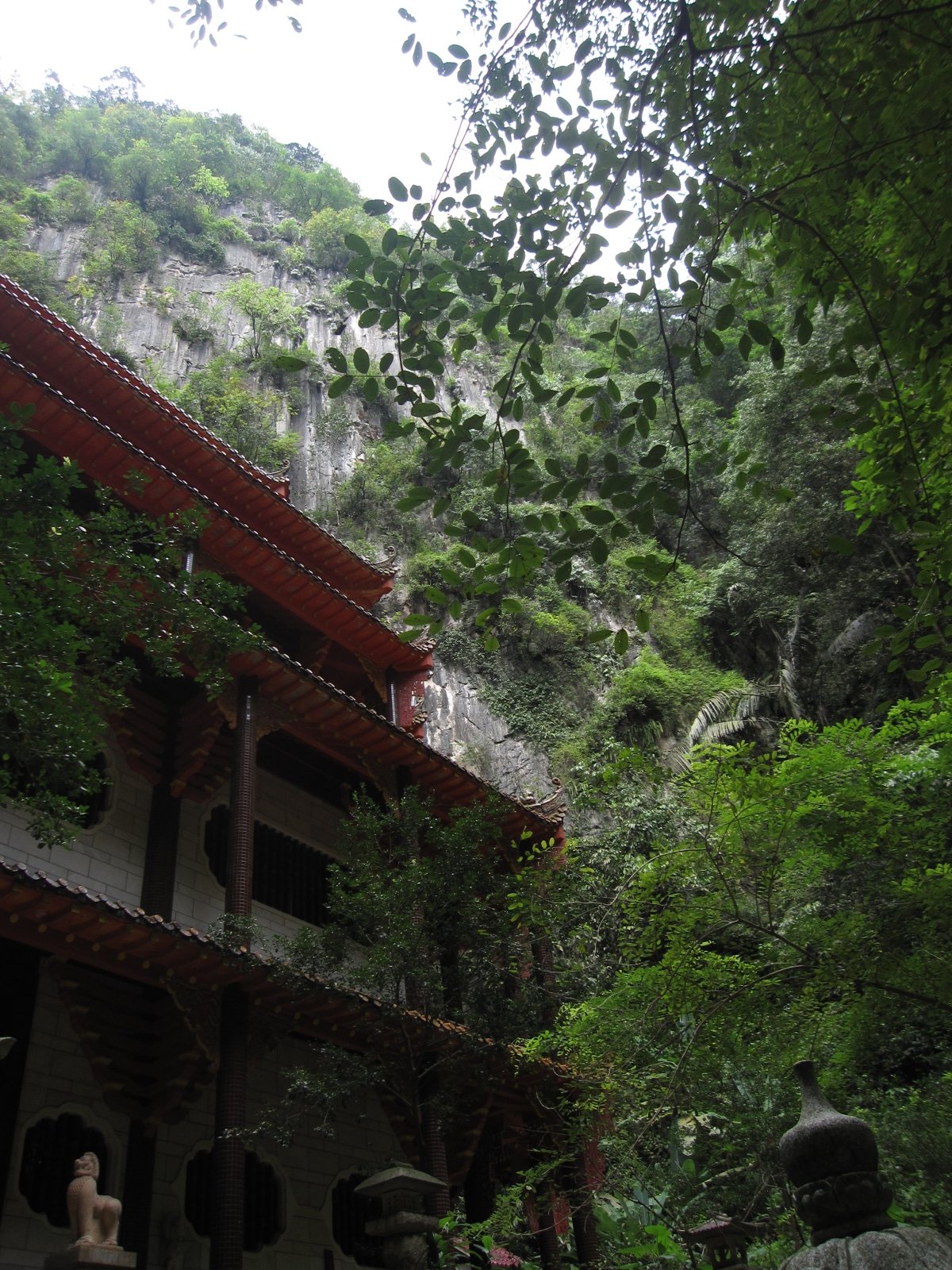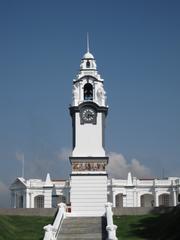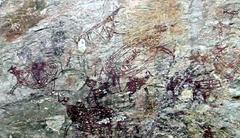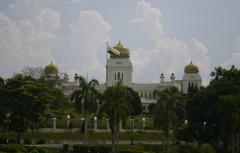
Comprehensive Guide to Visiting Sam Poh Tong, Ulu Kinta, Malaysia
Date: 19/07/2024
Introduction
Sam Poh Tong, also known as the Cave of Three Treasures, is a renowned Chinese Buddhist temple nestled within the limestone hills of Gunung Rapat, approximately 5 kilometers south of Ipoh in the state of Perak, Malaysia. This spiritual haven, discovered in 1890 by a Chinese monk, has evolved into one of Malaysia’s most significant Buddhist temples and a must-visit destination for both history enthusiasts and spiritual seekers (Perak Tourism). The temple is a magnificent blend of natural limestone formations and intricate man-made structures, reflecting traditional Chinese architectural styles and modern influences. Visitors are drawn to its serene environment, rich cultural heritage, and the opportunity to explore its historical artifacts, prayer halls, meditation caves, and the iconic tortoise pond, which symbolizes longevity and good fortune (Malaysia Traveller). Whether you are seeking tranquility, cultural enrichment, or a deeper understanding of the local Chinese Buddhist community, Sam Poh Tong offers a unique and enriching experience.
Table of Contents
- Introduction
- History and Significance of Sam Poh Tong 三宝洞
- Architectural Highlights
- Historical Artifacts and Statues
- Role in the Local Community
- Preservation and Conservation Efforts
- Visitor Information
- Special Events and Guided Tours
- Photographic Spots
- FAQ
- Conclusion
History and Significance of Sam Poh Tong 三宝洞
Origins and Early History
Sam Poh Tong’s history dates back to 1890 when it was discovered by a Chinese monk who was passing through the area. According to local lore, the monk decided to make the cave his home and a place of meditation, thus laying the foundation for what would become one of Malaysia’s most significant Buddhist temples (Perak Tourism).
Development and Expansion
Over the years, the temple has undergone significant development and expansion. In the 1950s, the local Chinese community took an active role in transforming the cave into a temple complex. This period saw the construction of various structures, including prayer halls, meditation areas, and a series of intricate statues and carvings. The temple’s architecture is a blend of traditional Chinese and modern styles, featuring ornate decorations and vibrant colors that reflect its cultural heritage (Malaysia Traveller).
Cultural and Religious Significance
Sam Poh Tong holds immense cultural and religious significance for the local Chinese Buddhist community. It is dedicated to the Bodhisattva Kuan Yin, the Goddess of Mercy, and serves as a place of worship, meditation, and community gatherings. The temple is particularly busy during major Buddhist festivals such as Vesak Day, when devotees from all over Malaysia and beyond come to offer prayers and participate in various religious activities (Ipoh City).
Architectural Highlights
Main Prayer Hall
The main prayer hall is adorned with intricate carvings and statues of various Buddhist deities. The centerpiece is a large statue of Kuan Yin, surrounded by smaller statues of other Bodhisattvas.
Pagoda
The seven-tiered pagoda is a prominent feature of the temple, offering panoramic views of the surrounding area. It is a popular spot for visitors to take photographs and enjoy the serene environment.
Tortoise Pond
The temple grounds include a large pond filled with tortoises, which are considered symbols of longevity and good fortune in Chinese culture. Visitors often feed the tortoises as a form of merit-making (Lonely Planet).
Historical Artifacts and Statues
Ancient Bells and Drums
These are used during religious ceremonies and are believed to date back to the early days of the temple.
Stone Inscriptions
Various stone inscriptions can be found throughout the temple, detailing its history and the contributions of notable figures in its development.
Buddhist Scriptures
The temple’s library contains a collection of ancient Buddhist scriptures and texts, some of which are rare and valuable (Visit Southeast Asia).
Role in the Local Community
Sam Poh Tong plays a vital role in the local community, serving not only as a religious center but also as a cultural and social hub. The temple organizes various community events, including cultural performances, educational workshops, and charity drives. It also provides support to the local community through initiatives such as free medical clinics and educational scholarships (Time Out Kuala Lumpur).
Preservation and Conservation Efforts
Given its historical and cultural significance, efforts have been made to preserve and conserve Sam Poh Tong. The temple is maintained by a dedicated team of caretakers and volunteers who ensure that its structures and artifacts are well-preserved. Additionally, the temple has been the focus of various conservation projects aimed at protecting its unique limestone cave environment from environmental degradation and human impact (The Star).
Visitor Information
Ticket Prices and Opening Hours
Sam Poh Tong is open to the public daily from 9:00 AM to 6:00 PM. There is no entrance fee, making it accessible to everyone. However, donations are encouraged to help maintain the temple.
Travel Tips
When planning your visit, consider arriving early in the morning to avoid the crowds. Wear comfortable walking shoes, as the temple grounds are extensive. Photography is allowed, so don’t forget your camera to capture the stunning architecture and serene landscapes.
Nearby Attractions
While in the area, you can also visit other nearby attractions such as Kek Lok Tong Cave Temple and Perak Cave Temple. Both are within a short driving distance and offer unique experiences of their own.
Accessibility
The temple is accessible by car and there is ample parking available. Public transportation options include buses and taxis from Ipoh city center.
Special Events and Guided Tours
Sam Poh Tong hosts various special events throughout the year, including religious festivals, cultural performances, and meditation retreats. Guided tours are available for those interested in a more in-depth understanding of the temple’s history and significance.
Photographic Spots
The temple offers numerous picturesque spots for photography. The pagoda and tortoise pond are particularly popular among visitors. The natural limestone formations and lush gardens provide a stunning backdrop for memorable photos.
FAQ
What are the visiting hours for Sam Poh Tong?
The temple is open daily from 9:00 AM to 6:00 PM.
Is there an entrance fee to visit Sam Poh Tong?
No, there is no entrance fee, but donations are encouraged.
Can I take photographs inside the temple?
Yes, photography is allowed throughout the temple grounds.
Are guided tours available?
Yes, guided tours are available. It is recommended to book in advance.
What are some nearby attractions?
Nearby attractions include Kek Lok Tong Cave Temple and Perak Cave Temple.
Conclusion
Sam Poh Tong stands as a testament to the rich cultural and religious heritage of the Chinese Buddhist community in Malaysia. Its historical significance, stunning architecture, and serene surroundings make it a standout attraction in Ipoh and beyond. From the intricate carvings in the main prayer hall to the panoramic views from the seven-tiered pagoda, each aspect of the temple offers a glimpse into the profound spirituality and artistic legacy that it represents (Lonely Planet). The temple’s role in the local community extends beyond its religious functions, serving as a cultural and social hub that organizes various events, workshops, and charity initiatives (Time Out Kuala Lumpur). Efforts to preserve and conserve Sam Poh Tong ensure that future generations can continue to enjoy and learn from this historical site. Visiting Sam Poh Tong is not just an exploration of a physical space, but an immersion into a living tradition that continues to inspire and nurture the human spirit. Plan your visit today and experience the serenity, beauty, and spiritual enrichment that Sam Poh Tong has to offer.




